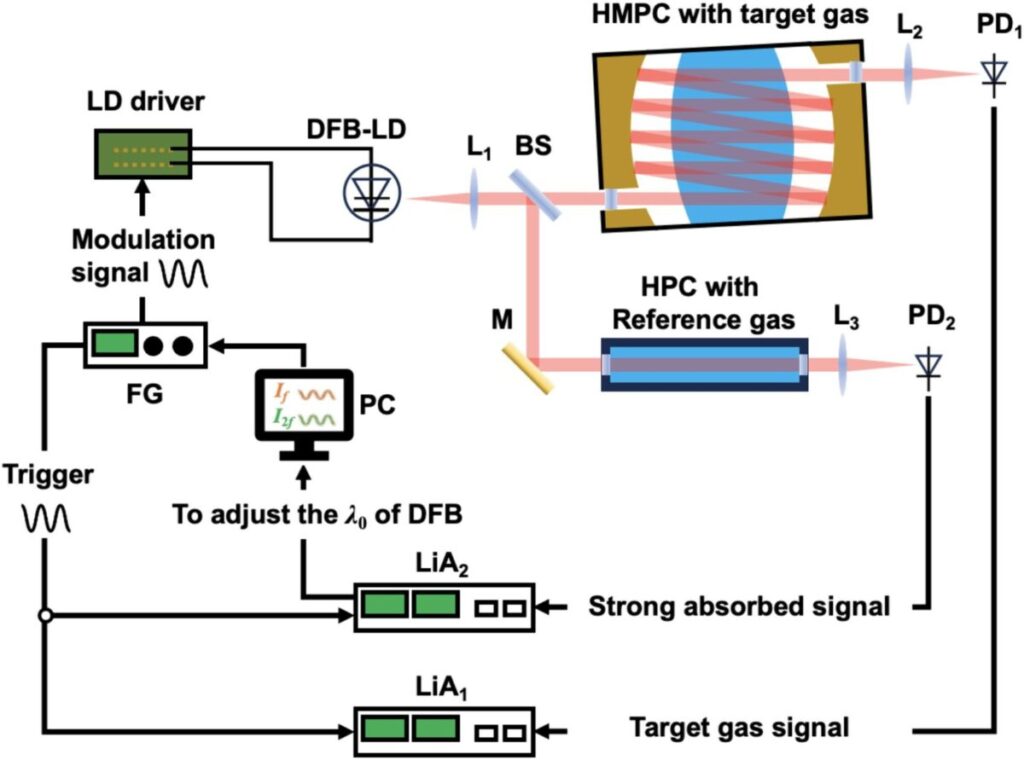Researchers in Japan have developed an optimized hydrogen gas measurement using the TDLAS technique. Reportedly, it can achieve a detection range of hydrogen gas concentration from 0.01% to 100%. The group said it could improve the safety of hydrogen and therefore its adoption.
Scientists from Japan have developed a new method for measuring hydrogen gas, using tunable diode laser absorption spectroscopy (TDLAS) at different pressures and a high-pressure gas cell.
TDLAS is widely used for gas analysis, but has previously had difficulty quantifying low hydrogen concentrations due to its lower absorption compared to other gases in the near-infrared (NIR) region.
“Our system can significantly improve hydrogen detection systems for safety and quality control, facilitating wider adoption of hydrogen fuel,” explains Tatsuo Shiina, who led the research. “For example, this system can be used reliably to detect leaks in hydrogen fuel cell cars.”
In TDLAS methods, a laser is passed through a Herriott multipass cell (HMPC) containing the target gas. The laser wavelength is modulated around the target absorption line of the gas to remove ambient noise, while the cell pressure can be tuned to influence the absorption line.
The researchers analyzed the width of hydrogen’s strongest absorption line at different pressures and, through a series of simulations, identified the optimal pressure for a wider absorption linewidth and the most effective modulation parameters within this linewidth.
Image: Optics and Laser Technology, Chiba University, CC BY 4.0 license
They then applied those results to a calibration-free technique. Essentially, instead of processing just the second harmonic signal, as done in traditional TDLAS, they used the ratio of the first and second harmonics. By doing this, the academics were able to normalize the research and achieve the optimal measurement conditions for increasing the gas detection limit and stabilizing the wavelength lock for the laser diode.
The researchers also achieved accurate measurements of hydrogen concentrations in a wide detection range from 0.01% to 100%. “In addition, the results improved with longer integration times, the time period during which light is allowed to be absorbed. At an integration time of 0.1 second, the minimum detection limit was 0.3% or 30,000 ppm, which improved to 0.0055% or 55 ppm at an integration time of 30 seconds,” they explained. “However, after 30 seconds the minimum detection limit was increased.”
Concluding the study, the group added that despite identifying limitations related to optical elements and laser properties, “the experimental method shows excellent overall performance in measuring hydrogen concentrations. This innovative method for accurate hydrogen measurement offers potential applications in trace gas detection for hydrogen stations or hydrogen vehicles in the future. It can also be used for quality checks of hydrogen.”
Their findings were presented in “Optimization for quantitative measurement of hydrogen gas using tunable diode laser absorption spectroscopy”, published in Optics and laser technology. Scientists from Chiba University, Mitsubishi Electric Corporation, Kyushu University, Shikoku Research Institute and Tokai University conducted the research.
This content is copyrighted and may not be reused. If you would like to collaborate with us and reuse some of our content, please contact: editors@pv-magazine.com.
Popular content


